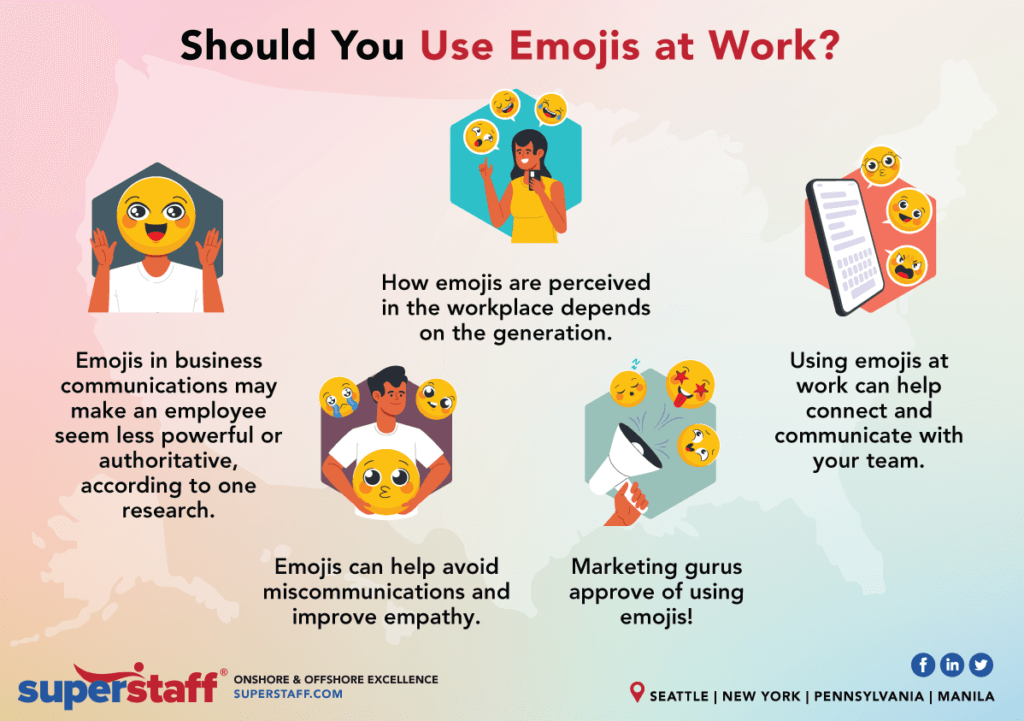Emoji Power and Gender Battles: Examining Mass Communication's Hidden Utility!
In seeking out articles to use for my mass media research, I leveraged the University of Florida Library to identify a mass media journal that had some articles that I was interested in. In the end, I turned to the Athens Journal of Mass Media and Communications -- centered in Athens, Greece. I chose two articles from Volume 9, Issue 3.
The first article I examined deals with a study on the role of Internet emoticons and business communication situations. Emoticons tend to provide the ability for people to understand context, emotion and intention through text-only mediums such as text messaging, emails or online forums. When utilized in a business or professional setting, emoticons can enhance or destroy communications.

With this study, the exploration of emojis or emoticons as tools to convey professionalism and business etiquette symbolizes the importance of fostering trust and sincerity in these mediums. This illuminates how visual cues in text-based mediums can communicate a sense of care and respect and enhance the overall professionalism of a business-based communication system. The study also seems to deal with the realm of self-image construction through emojis, which help shape individuals' online personas and anonymous communication perception as a whole. Essentially, individuals can strategically use symbols such as Emojis to project images based on the nature of their interactions. Essentially, leveraging these emojis can increase the clarity and the purpose of the communication taking place.
Finally, the article seems to show that emoticons or emojis can promote mutual understanding and improve the efficiency of business communication. By addressing the fundamental aspects of a vector interaction such as understanding context, intent and emotion, emojis help us to identify these patterns in mediums where it might otherwise be impossible or extremely difficult to do so. Many times this has also been found to prevent misunderstandings and save time and communication, essentially preventing those email chains from going so far that people get burnt down on them or end up hitting the dreaded reply all button in a desperate attempt to shut it down (because we all know those people).
Next, I decided to take a look at a quantitative study that deals with Bangladeshi women journalists and their experience of gender discrimination. This study delved deep into the harassment underpinning the surveyed population to find that the root causes could be considered the authoritative structuring of the society/businesses themselves, or the patriarchy in and of itself.
Leveraging the survey methodology and the in-depth interviews that you can find in the article can contribute to the mass communication field by offering a comprehensive expiration of the challenges faced by women journalists in Bangladesh. The survey which encompasses 47 participants provides a quantitative lens to understand the prevalence and patterns of gender-based discrimination and harassment. While a small portion of the population, claims/theories can be made as to the larger scope based on the data provided in the article. Additionally, I turned to a separate article, not locked behind a library membership wall, to further understand the importance of the issue and identify what was going on further.
The personal narratives of detailed discussions that you could find in these interviews could unveil the root causes of discrimination as mentioned above, and provide valuable insight into the emotional and psychological impacts of discrimination. This could offer a nuanced understanding that goes far beyond simple statistics and data. The interviews also uncover resilient strategies employed by the women journalists, which shed light on how individuals could be able to navigate and cope with challenging environments, even those underscoring discrimination.

Through this research, policymakers and media organizations could be equipped with a comprehensive understanding of the issues at hand and foster the development of informed strategies, policies and interventions to address gender-based discrimination and harassment in the mass communication field.
The quantitative methods used in the study of Bangladeshi women journalist discrimination offer a clearer picture. This is because the survey's methodology with a sample size of 47 participants provides a structured and measurable approach to understanding the prevalence and patterns of this discrimination and harassment. The use of quantitative data allows for statistical analysis and generalizations to the larger population. On the other hand, the study on Internet emoticons deals with a qualitative approach. While qualitative approaches can provide valuable insights, they can also be more subjective and context-dependent. This means qualitative approaches could tend to lack the same level of clarity and generalizability as the quantitative methods, making it more challenging to drop broad, wide-reaching conclusions applicable to a larger population, meaning that the clarity of the data gathered could be a little muddier.
Overall, I think both studies do a good job of addressing the issues they seek to understand, and it's clear to see how mass media research and theorization can lead to a broader impact and a more nuanced understanding of these impacts in the future.